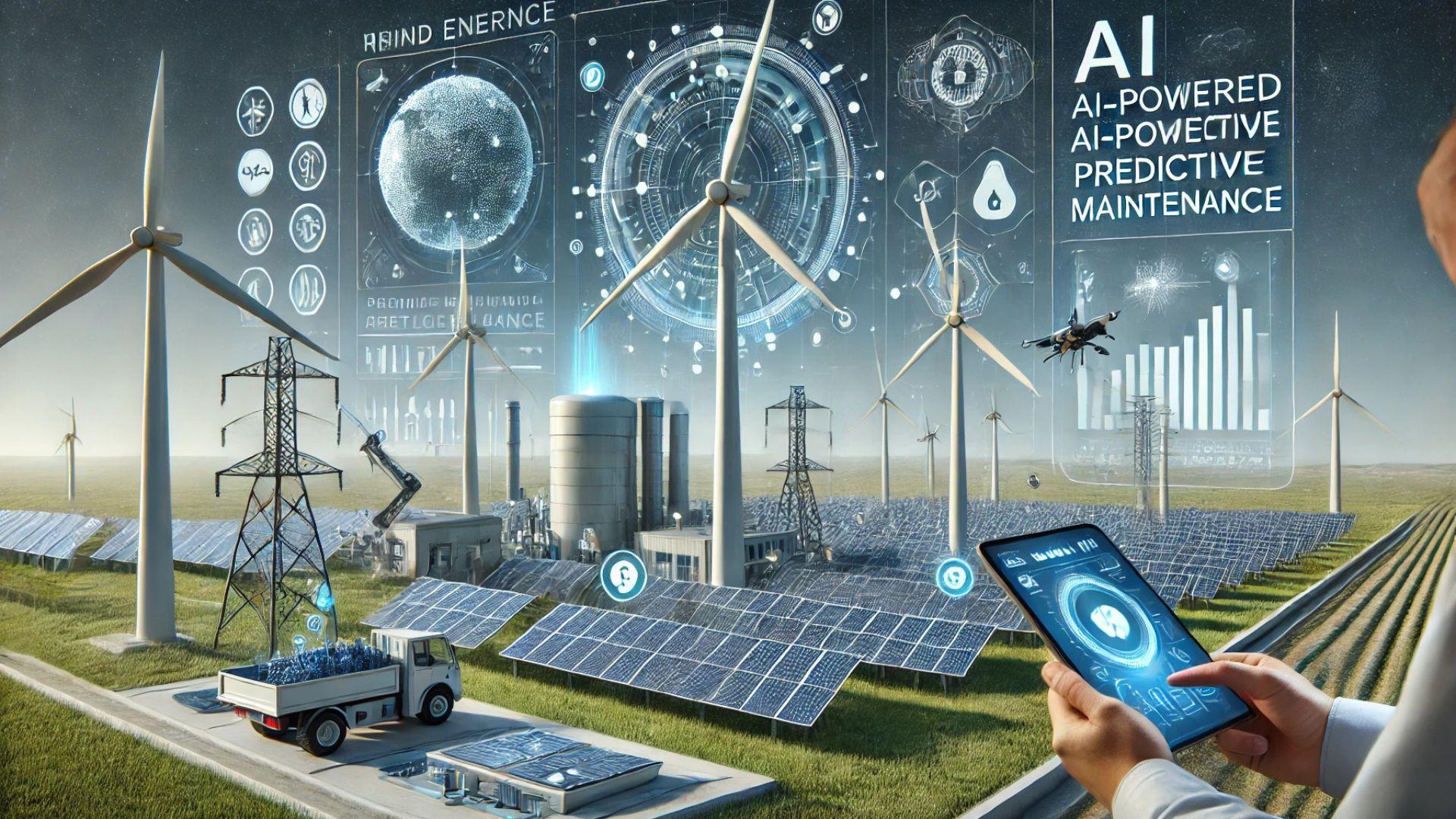In the ever-evolving landscape of renewable energy, ensuring optimal efficiency and minimizing downtime are crucial for maintaining a stable and sustainable energy supply. Traditional maintenance strategies often lead to unexpected failures, resulting in costly repairs and operational disruptions. However, predictive maintenance with AI is transforming the way renewable energy systems function, offering proactive solutions that enhance efficiency, extend equipment life, and reduce costs.
Understanding Predictive Maintenance in Renewable Energy
Predictive maintenance refers to the use of advanced technologies to monitor the condition of equipment and predict failures before they occur. This approach is particularly beneficial for renewable energy assets such as wind turbines, solar panels, and hydroelectric systems, where unexpected breakdowns can lead to significant financial losses.
With the integration of AI solutions in energy technology, predictive maintenance leverages machine learning, big data analytics, and IoT (Internet of Things) sensors to collect real-time operational data. By analyzing this data, AI algorithms can identify patterns, detect anomalies, and forecast potential issues, allowing operators to schedule maintenance precisely when needed.
How AI-Driven Predictive Maintenance Works
AI-driven predictive maintenance follows a systematic approach to ensure seamless operation and minimal downtime:
-
Data Collection: IoT sensors installed on renewable energy equipment continuously collect data on temperature, vibration, humidity, and other performance metrics.
-
Data Processing: AI-powered analytics tools process the vast amount of collected data to detect trends and deviations from normal operating conditions.
-
Predictive Analysis: Machine learning models analyze historical and real-time data to predict potential failures or inefficiencies.
-
Automated Alerts: AI systems send real-time alerts to maintenance teams, allowing them to take proactive action before a critical failure occurs.
-
Optimized Maintenance Scheduling: Instead of relying on routine maintenance checks, AI helps schedule servicing based on actual equipment condition, reducing unnecessary downtime.
Benefits of Predictive Maintenance with AI in Renewable Energy Systems
1. Reduced Downtime and Improved Efficiency
By detecting potential faults before they lead to system failures, AI-driven predictive maintenance ensures uninterrupted energy production. This proactive approach significantly reduces operational disruptions and improves the overall efficiency of renewable energy plants.
2. Cost Savings in Maintenance and Repairs
Traditional maintenance methods often involve periodic inspections, which can be expensive and inefficient. AI-powered predictive maintenance minimizes unnecessary maintenance, lowers repair costs, and prevents catastrophic failures that require costly replacements.
3. Extended Equipment Lifespan
Predictive maintenance enhances asset longevity by preventing excessive wear and tear. Regular monitoring and timely interventions help optimize the performance of renewable energy equipment, leading to a longer operational lifespan.
4. Enhanced Safety and Reliability
Renewable energy plants often operate in harsh environments, making manual inspections challenging and risky. AI-driven monitoring systems ensure continuous surveillance of equipment, reducing the need for human intervention and enhancing overall safety.
5. Optimized Energy Production
By maintaining renewable energy assets in peak condition, AI-driven maintenance ensures optimal power output. This maximizes energy efficiency, contributing to a more stable and sustainable power grid.
Real-World Applications of AI-Powered Predictive Maintenance
Several companies and industries have already embraced AI solutions in energy technology to enhance predictive maintenance capabilities. Some notable examples include:
-
Wind Farms: AI-powered sensors and machine learning algorithms analyze wind turbine performance, detecting early signs of gearbox failures or blade damage. Operators can schedule maintenance precisely when needed, reducing unplanned downtime.
-
Solar Power Plants: AI-based predictive models analyze weather patterns, panel efficiency, and environmental conditions to optimize solar energy generation and detect potential system inefficiencies.
-
Hydropower Stations: AI systems monitor water flow rates, turbine efficiency, and structural integrity, ensuring seamless operation and preventing unexpected shutdowns.
The Future of AI in Predictive Maintenance for Renewable Energy
As AI technology continues to evolve, the future of predictive maintenance in renewable energy looks promising. Advancements in AI solutions in energy technology will further refine predictive capabilities, making maintenance even more accurate and efficient. Key developments to watch for include:
-
Integration with Digital Twins: AI-powered digital twins—virtual replicas of physical assets—will enable even more precise predictive maintenance by simulating real-time conditions and predicting failures before they occur.
-
Edge Computing for Real-Time Analysis: With edge computing, AI algorithms will process data closer to the source, reducing latency and improving real-time decision-making.
-
Self-Healing Systems: Future AI-driven renewable energy systems may incorporate self-healing mechanisms, where AI detects issues and autonomously takes corrective actions to prevent failures.
Conclusion
The adoption of predictive maintenance with AI is revolutionizing the renewable energy sector by significantly reducing downtime, enhancing efficiency, and optimizing energy production. As the demand for clean energy continues to rise, leveraging AI solutions in energy technology will be key to ensuring the reliability and sustainability of renewable energy systems. By embracing AI-powered predictive maintenance, energy providers can achieve a smarter, more resilient, and cost-effective approach to managing their assets.

